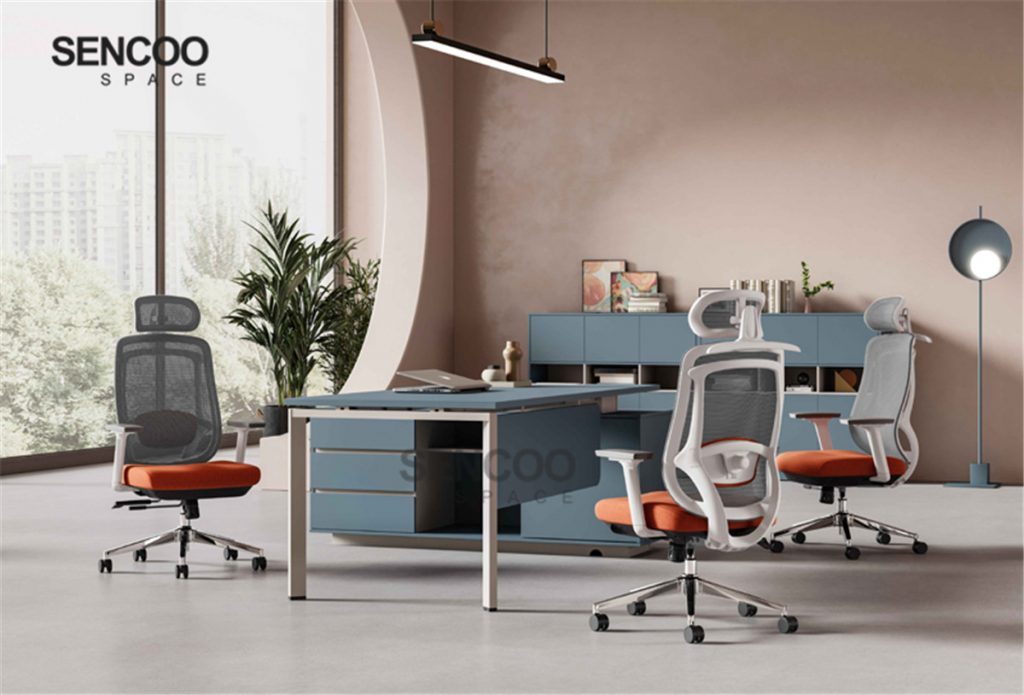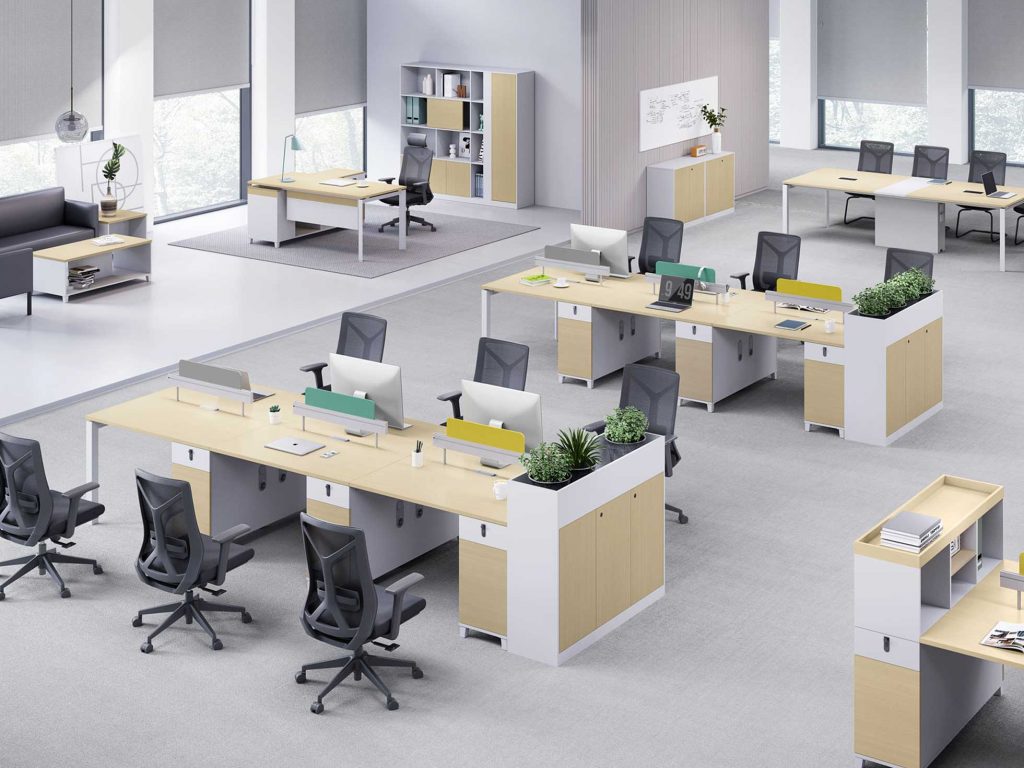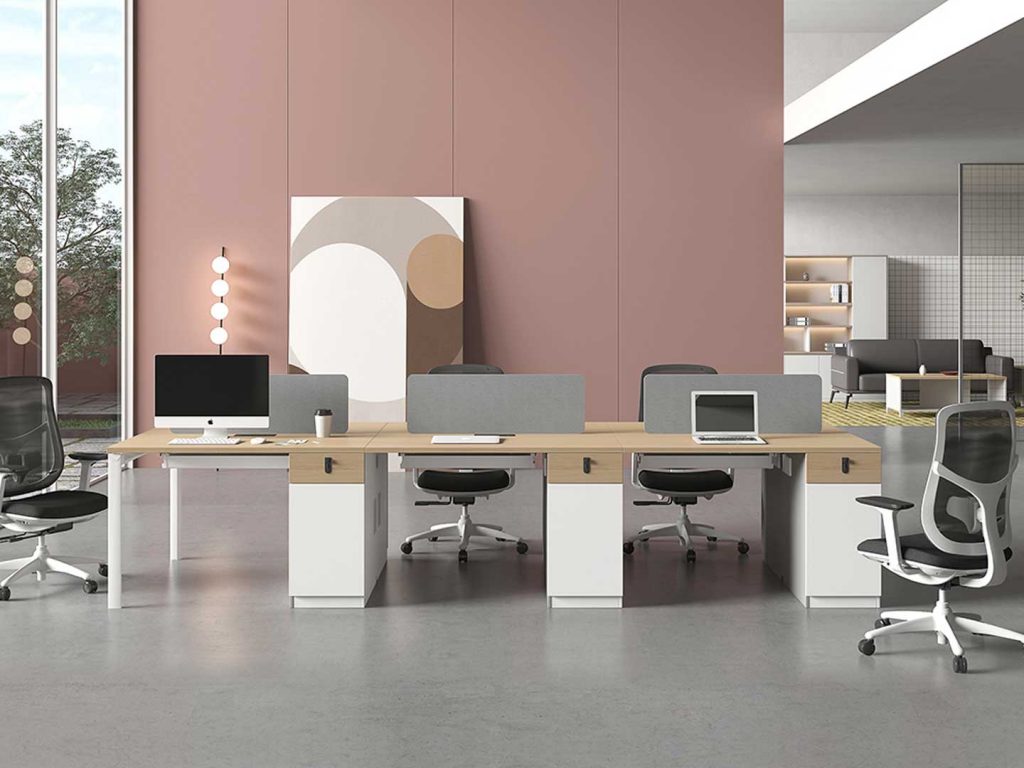Choosing the right office chair requires consideration of office space size, layout, usage needs, and employee comfort. Here is a detailed selection guide:

1. Choosing Based on Office Space Size
- Small Office Spaces
Opt for compact, stackable, or foldable office chairs to save space. For example, armless chairs or lightweight chairs with casters. - Medium Office Spaces
Ergonomic swivel chairs are ideal, providing comfortable support while not taking up too much space. - Large Office Spaces
High-back chairs and adjustable seating options enhance comfort and improve employee productivity.
2. Choosing Based on Office Environment Type
- Open Office Areas
Lightweight, breathable mesh office chairs are recommended to reduce heat buildup and allow easy movement. - Private Offices
Chairs with headrests and high-back designs provide better support and comfort, reflecting a professional image. - Meeting Rooms
Simple, ergonomic chairs with adequate back support are suitable for prolonged meetings. - Co-working Spaces
Adjustable-height and mobile chairs are ideal to accommodate different users’ needs.
3. Choosing Based on Ergonomics
- Adjustable Height
Ensures that employees of different heights can sit with their knees at a 90-degree angle, reducing leg strain. - Lumbar Support
Chairs with lumbar support help alleviate lower back pressure during long working hours. - Seat Cushion Material
Breathable mesh or high-density foam cushions provide enhanced comfort. - Armrest Design
Adjustable armrests reduce shoulder fatigue, especially for those who type for long hours.
4. Choosing Based on Style and Budget
- Corporate Image
High-end business offices may opt for leather or premium fabric chairs to enhance the overall office aesthetics. - Cost Control
Budget-conscious companies can choose cost-effective mesh chairs, balancing comfort and durability. - Color Coordination
The chair color should align with the overall office style. Modern office designs work well with black, white, or gray tones, while creative spaces can incorporate vibrant colors.
5. Special Considerations
- Extended Sitting Hours
Ergonomic chairs with strong support and adjustable features are necessary for prolonged sitting. - Standing Desk Compatibility
High stools or chairs with footrests allow easy switching between sitting and standing positions. - Shared Workstations
If chairs are used by multiple employees, opt for durable, easily adjustable models to accommodate different heights and body types.
Choosing the right office chair not only enhances employee productivity but also improves the overall office experience. When purchasing, consider space size, user needs, and ergonomic factors to ensure each employee finds a chair that suits them best.

